Mulligans
My Control Shaman deck list guide for the Witchwood expansion will teach you how to play this board control-centric Shaman list. This Control Shaman guide includes Mulligans, Gameplay Strategy, Card Substitutions, and Combos/Synergies!
Introduction to Control Shaman
In the past, several variants of Control Shaman with different win conditions have seen play, including combo heavy decks such as Ancestral and Crusher Shaman. During the WotOG and MSoG meta, Aggro Shaman was the most predominant deck archetype on ladder, because of it’s strong early game and the midrange Jade package, which offered a lot of value to the mid game. In the year of the mammoth, Evolve Shaman became a tier one deck, however it got overshadowed by Razakus Priest and Jade Druid.
With the new year of the Raven, the staple Jade cards are rotating out of standard, which is why elementals might be the best replacement for the backbone of each Shaman deck list. Cards like Kalimos, Primal Lord and Grumble, Worldshaker have very powerful Battlecries, which allow for high-value turns. The Witchwood expansion gives Shaman a new tool, Shudderwock, which utilizes these strong battlecries, by recasting them. In combination with cards like Saronite Chain Gang and Baleful Banker, an infinite loop of powerful battlecries can be generated through copies of Shudderwock.
UPDATE: CONTROL SHAMAN (APRIL 2018 – THE WITCHWOOD RELEASE)
Work in progress.
Control Shaman Card Choices
CLASS CARDS
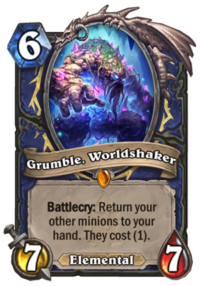 Far Sight – It is debatable, whether or not this card is worth running in this deck. Although being very slow, it provides us with card draw after all, which is an important mechanic for the success of such heavy combo reliant decks. Furthermore, the mana cost reduction has the potential to accelerate our key cards and game plan.
Far Sight – It is debatable, whether or not this card is worth running in this deck. Although being very slow, it provides us with card draw after all, which is an important mechanic for the success of such heavy combo reliant decks. Furthermore, the mana cost reduction has the potential to accelerate our key cards and game plan.- Hot Spring Guardian – In general, survivability is essential for combo and control decks. The stats are mediocre, however the Taunt keyword, mana cost and battlecry make up for the lack of board presence and with the elemental tag, we have another activator for Kalimos.
- Lightning Storm – This is a great card against aggressive decks and the board clears compensate our lack of high-statted minions, which can fight for board presence.
- Mana Tide Totem – This card provides a solid card draw mechanic in almost any Shaman deck. It has the potential to snowball and draw several cards, if it is not dealt with immediately by the enemy.
- Hex – In my opinion, you can‘t play Shaman without one or two copies of Hex. This deck already lacks single target removal and silences. Against cards like Voidlord, you are going to have an answer, which greatly improves your odds of winning.
- Volcano – Volcano is here for the same reason as Lightning Storm, however you can use it as a single target removal in certain situations, which is why I think it is reasonable to include it in this deck.
- Grumble, Worldshaker – A key card for the success of this deck. It not only has the potential to snowball the game by allowing you to cast several one cost versions of Shudderwock, but it also synergizes with your other battlecry minions, allowing you to play multiple copies of the latter in the same game.
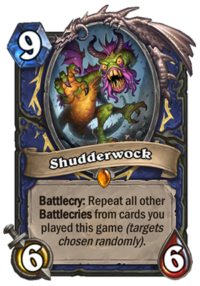
- Kalimos, Primal Lord – This is a tough one. I will give you a thorough insight into my thoughts for this card in the alternative cards section below. Kalimos has a powerful battlecry and the different possible invocations provide some sort of versatility. However, the latter can also be seen as an inconsistency, because Shudderwock randomly casts the invocation. Ideally, you can deal three damage to the board, but you might also end up with a board full of murlocs, which might potentially ruin your infinite loop.
- Shudderwock – Definitely the core of this deck. This card is your win condition and allows you to snowball games, once you have established board control.
Neutral cards
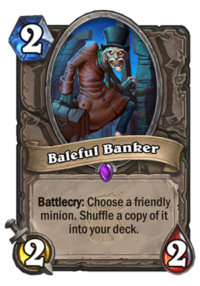 Fire Fly – Apart from being a solid one drop, Kalimos is the main reason why this is in the deck. You need to ensure that you can consistently activate the battlecry of Kalimos.
Fire Fly – Apart from being a solid one drop, Kalimos is the main reason why this is in the deck. You need to ensure that you can consistently activate the battlecry of Kalimos.- Baleful Banker – This card is more or less your insurance that you can go infinite and never lose to fatigue. However, it shuffles a card into your deck, which delays you drawing your actual keycards. Nevertheless, similarly to Grumble, if you manage to shuffle copies of Saronite Chain Gang or Lifedrinker into your deck, you can even get more value out of Shudderwock, although it isn’t really necessary for you to win.
- Doomsayer – Great card against aggro or just a solid turn two play against control. It can set up an empty board for Mana Tide Totem.
- Loot Hoarder – In my opinion, this is the best option for neutral card draw, since you don’t want a battlecry to draw you a card, because it can easily mill you with Shudderwock.
- Tar Creeper – Similar to Hot Spring Guardian, but with much better stats and it has the elemental tag aswell.
- Lifedrinker – I am aware of there being much better battlecries in the game, however instead of going for a greedy setup, I choose Lifedrinker to be my main damage source. You can compare the effect to the Hero Power of Bloodreaver Gul'dan, which offers you great snowball potential. The main drawback of Lifedrinker are its stats. Four mana 3/3 “do nothing” is more or less what it does in the midgame.
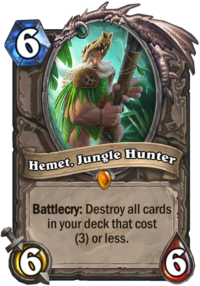 Saronite Chain Gang – The final piece of the puzzle in order to make the infinite loop work. The battlecry allows you to generate copies of Shudderwock, which are ideally returned back to your hand by Grumble’s battlecry, allowing several Shudderwocks to be played during your next turn.
Saronite Chain Gang – The final piece of the puzzle in order to make the infinite loop work. The battlecry allows you to generate copies of Shudderwock, which are ideally returned back to your hand by Grumble’s battlecry, allowing several Shudderwocks to be played during your next turn.- Hemet, Jungle Hunter – I think Hemet does actually fit very well into this deck. The only important card and more importantly the battlecry you would lose, is the one of Baleful Banker. However, you can expect to have played or atleast still have a copy of the latter in your hand. Hemet thins out your deck and leaves all the relevant key cards behind, getting you faster to the point, where you can just take over the game.
Work in progress.

















/rating_1_half.png)
/rating_2_off.png)
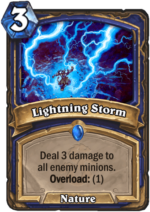
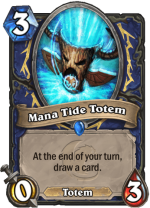
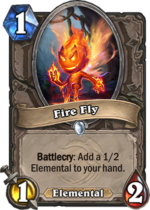
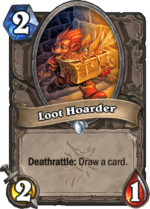
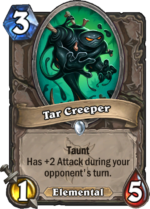
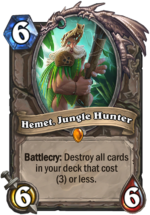
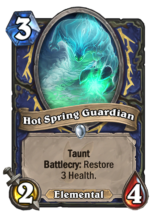
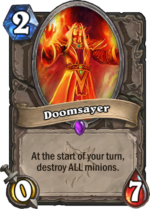

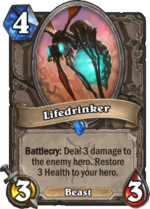
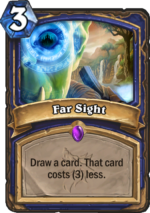
I think if you want to go for infinite value (no OTK), then an elise + shudderwock build is better (along with murmuring + grumble for consistency). Without murmuring, nothing is certain with shudderwock.
Far Sight actually synergizes with Hemet so that’s kinda cool. Since Far Sight is probably the best card in the game if you draw 3 cost or more 100% of the time. Far Sight isn’t usually good cause you need to run cards under three, but Hemet deletes those.
Has it been confirmed that Kalimos’ battecry triggers on Shudderwock regardless of needing to play an elemental on the previous turn? It seems like that condition still needs to be met.
Yeah I agree, Far sight does help you cycle through your deck and it is quite cheap for 3 mana. I have seen some decks run Bogshaper as another draw mechanic, however I think it is way to greedy, even though you would run cards like Unstable Evolution and Zap. I don‘t know, it just seems really slow to me at 7+ mana, whereas Far sight offers value at a cheaper cost, as you mentioned. Bogshaper might see play in more midrange/minion heavy decks though.
Kalimos’ battlecry does indeed require you to play an elemental during your previous turn. This is the reason why I run Fire Fly in this deck, since its battlecry allows you, in combination with Shudderwock, to consistently have an activator for Kalimos.
Except that far sight is removed by Hemet
Only if it’s in your deck
I was thinking:
Having 2 nightblades, Grumble and shudder..
T5– 1st Nightblade (5mana, 3dmg enemy hero)
T6– Grumble (6 mana, ideally brings Nightblade back to your hand)
T7– 2nd Nightblade (5mana, 3dmg) + 1st Nightblade (1mana, 3dmg)
T9– Shudder (9 mana, 9 dmg, return shudder hand)
T10– up to 10 shudders to deal direct dmg (do the shudders repeat other shudders battlecries?.. i mean a second shudder in this case would deal 9 dmg or 18 dmg.
Noticed that grumble’s battlecry does not bring itself back to hand, so T10 would only work is in 9 you had a grumble on table, that way T10 would go “1mana grumble, 1 mana shudder, etc…to max of 5 shudders)
I think Lifedrinker together with Nightblade might be a little overkill. However, you could ofcourse try to go for an OTK version of a Shudderwock deck. This would require you to play Murmuring Elemental and Fire Plume Harbringer, however the core combos are more or less the same as with this deck. I just think that you already have your win condition set up as soon as you play your Shudderwock and necessarily require an OTK to win. Therefore, I put my focus more into survivablity and consistency than in additional combo oriented cards. But I do see the advantages of an OTK deck and I think the meta will play a major role.
I like this deck. Feel free to check out my decks too. Really love control shaman (even though it struggles in the current meta) and I’ve been theory crafting on how to make it work well.
I’ve also theorized that murloc quest is a surprisingly good synergy with hagatha and shudder-loop. Would love to hear your thoughts!
Thank you, I really appreciate it! I think Hagatha and Primordial Drake are really strong cards, because their battlecries immediately effect the enemy minions and Shudderwock can then easily prevent the opponent from building up a board. It was a close decision for me between Hagatha and Kalimos and it is honestly still hard to tell, which one offers more value. Hagatha is more consistent, whereas Kalimos’ battlecry is more versatile. I think we have to playtest our decks in order to know
Your version with the murloc quest looks interesting too. I can definitely see the synergy, however I do think that you might end up each turn with a full hand at the later stages of the game. You would already have a win condition with Shudder, which is why I don’t know if the quest is necessary, but you can’t until you try it out!
Thanks for checking them out!
I definitely agree – drake is great with a little more AOE to help out. It is important, however, to acknowledge that only one can be played if you hope to get the shudderloops off. Kalimos is great but I worry about randomly getting the single target damage spell and hitting self or killing shudder. I’d take consistent value from hag any day, especially since the AOE helps keep board under control. That was my personal logic for ruling out kalimos, also not sure if an elemental is needed the turn before for it to actually activate.
As for the murloc deck, it’s interesting really. My experience with the murloc quest so far (I loved it when it first came out) is that it has great early game tempo, but even with putting down lots of murlocs per turn and activating quest – it’s still easy to run out of murlocs in the late game – and that’s where things go really wrong. The shudderloop helps to keep pushing the deck forward and gives a win condition that doesn’t detract too far from the murloc quest tempo or core cards. It’ll definitely require testing but I think it’s actually got a lot of potential!
Looking forward to trying these decks out and I’m down to keep talking about what we learn and discover.
Great idea, hope it works out.